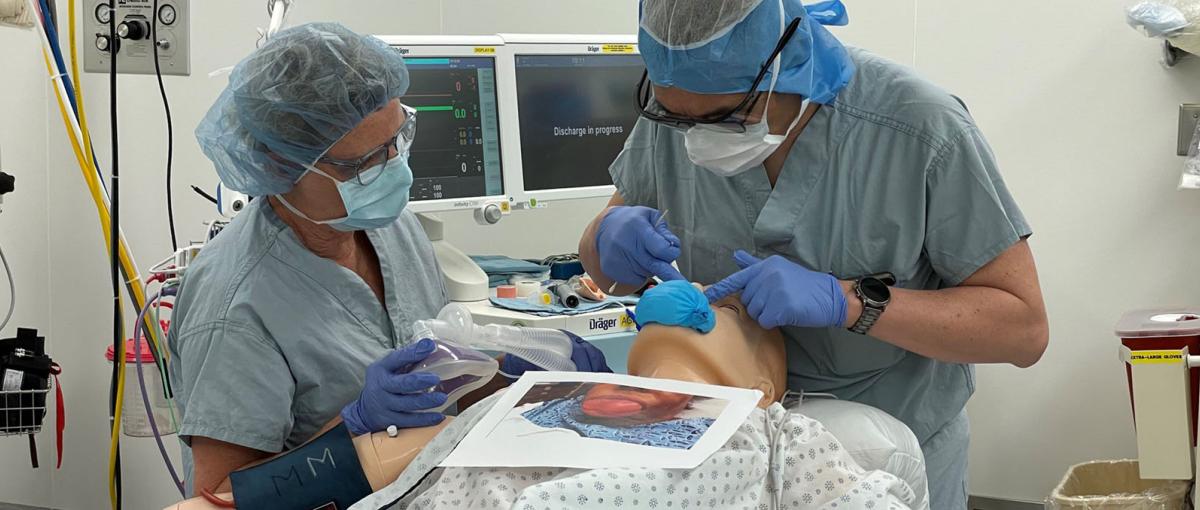Simulations integral to devleoping protocols for COVID-19 patients

May 21, 2021
By Karen Cho, Senior Communications Advisor, Covenant Health
Clinical simulations allow teams to grow skills through changing practices.
In the early days of the pandemic, new protocols had to be developed to safely protect staff and patients in the hospital setting. The Misericordia Interdisciplinary Simulation program responded by running simulations with the operating room (OR), intensive care unit and labour and delivery unit to develop many of these new protocols.
“In April 2020, we were delivering two to three simulation sessions per week,” says Dr. Ariane Fielding, an anesthesiologist at the Misericordia Community Hospital who leads the Interdisciplinary Simulation Program in the OR.
These teams come together in hospitals to participate in several simulations throughout the year, including an annual major Simulation Day event that occurs in May.
“When we are using our own staff, in their own environment, with their own equipment, it is a richer and more resourceful form of learning,” says Ariane. “You’re much more likely to remember things and apply them in the future.”
In the Misericordia OR simulations, full surgical teams of anesthesiologists, surgical staff, respiratory therapists, circulating nurses, scrub nurses, recovery room nurses and service attendants participate in life-saving scenarios.
A recent practice that has arisen from COVID-19 is how the team has adapted to performing a surgical airway simulation. “There are many airway algorithms on how to put in breathing tubes (intubation), but that changed during the pandemic. We were finding that as soon as we inserted a breathing tube down COVID patients, their oxygen levels dropped quickly.”
Ariane explains that in this instance the last resort is often to cut the neck and do a surgical airway, which is rare. “You have to really train to do that in order to be good at them. They don’t happen often enough for us to be able to have clinical experience at it, so we brought in pig tracheas to practice on.”
Another simulation that has helped augment understanding in the treatment of COVID-19 patients is the use of a powder that is activated by ultraviolet (UV) light.
“Few people understood how to deal with this new contagion at that time. Nobody knew if it was the surface contact that was the problem or whether it was more aerosolized. The problem with putting in breathing tubes is that is pushes fine particles into the air. That’s one of the highest risk events that we have.”
So Ariane and her team used a substance called Glo Germ, a sticky powder that glows under UV light to simulate virus particles. “We did a few practices just to see, if we had a patient cough, where the germ spreads. The UV light shows you what it sticks to, so that gave us an idea of what type of PPE we needed to wear.”
Simulation doesn’t only teach technical skills. Crisis resource management principles such as communication, leadership, role clarity and a shared mental model play a large role in responding to emergency situations.
Ariane says simulations are integral. “If you don’t practice in a simulated setting, you’d never be good at scenarios that don’t happen very often. But if they do, you want to be ready for them.”